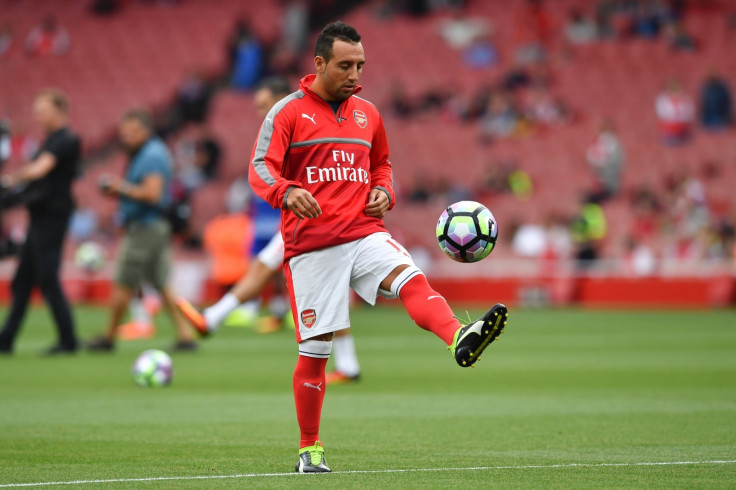'Maybe next year': Santi Cazorla's return date for Arsenal delayed until 2019
KEY POINTS
- Cazorla has not played since October 2016 and had targeted a return to training this month.
- The Spaniard had his 10th surgery last month and is expected to remain on the sidelines.
Santi Cazorla's return to first-team football has been delayed once again as the Arsenal midfielder is now targeting a comeback in 2019.
Cazorla has not featured for the Gunners since October 2016 when he damaged his Achilles during a Champions League match against Ludogorets.
The 32-year-old midfielder has since undergone nine surgeries to correct the problem as doctors had finally cleared him to walk after initial fears of a potential amputation following the loss of eight centimetres from the tendon in his right ankle.
Having targeted a return to training this month back in November, Cazorla was dealt another blow, however, as he had to go under the knife for a 10th time on his Achilles in December.
Arsenal legend Robert Pires revealed that the Spaniard would be out for another six months following his latest surgery but in a recent interview, Cazorla revealed that his expected return date would only be in 2019. The former Malaga man also touched upon how he was pondering the possibility of retirement.
"There have been moments when I've thought about throwing in the towel," Cazorla told RTVE via the Daily Mail. "I've thought things like 'maybe it is not worth continuing'.
"If things go well, maybe next year I can play at the top level again. The last surgery was seven weeks ago, and my tenth in total. The first surgery was risky because I took many corticosteroids and the skin deteriorated. Then a skin graft was proposed and after that, the infection ate my tendon."
In a show of good faith, the north London club exercised their option to extend Cazorla's expiring contract by a further 12 months to June 2018 earlier last year.
However, it remains to be seen if Cazorla will still have a future at the Emirates Stadium following the summer as he would have been out of action for nearly two years by that point.






















